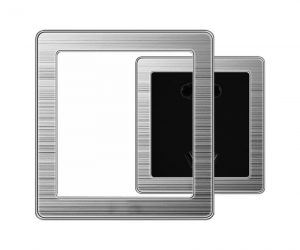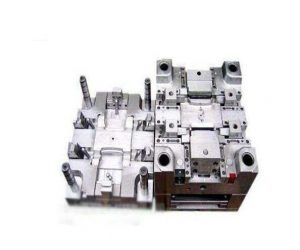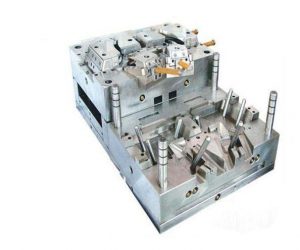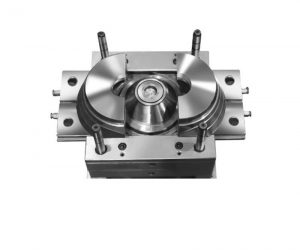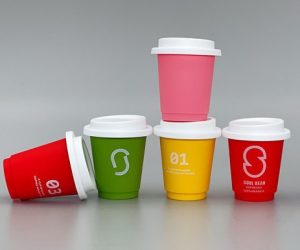Multilayer injection molding is a cutting-edge technique in the plastics industry. It allows manufacturers to create complex, high-performance parts with multiple layers of different materials. This method significantly enhances the mechanical, thermal, optical, and barrier properties of plastic products while cutting down on production costs and waste.
Firstly, this technology boosts the performance of plastic items by combining various material layers. For instance, in car manufacturing, strong plastic layers can be paired with wear-resistant ones, making the part more durable and resistant to impact. Similarly, insulation layers can be combined to improve both heat and sound insulation.
Additionally, multilayer injection molding enhances the visual appeal of plastic products. By using transparent or translucent plastics, manufacturers can showcase the internal design and structure of electronic product casings. Custom looks can also be achieved with colored or textured plastic layers.
Moreover, this technology lowers production expenses. Since it forms multiple layers simultaneously, it reduces the need for extra processing and assembly steps, cutting costs. Optimizing mold designs and production processes further boosts efficiency and trims costs.
Lastly, multilayer injection molding helps minimize waste. The precise control over materials and molding processes reduces scrap during production. Recycling discarded plastic materials also promotes resource conservation and further cuts down on waste.
In summary, multilayer injection molding offers an efficient, cost-effective, and eco-friendly way to produce better quality plastic products. As this technology continues to advance, I believe it will become even more widely adopted across various industries.
- Material Selection: The first step in thermoset molding is selecting the appropriate thermosetting plastic material. Common thermosetting plastics include epoxy, phenolic, melamine, and urea formaldehyde resins. The choice of material depends on the desired properties and application of the final product.
- Material Preparation: Thermosetting plastics are typically supplied in the form of granules, pellets, or powders. Before molding, the raw material is weighed and mixed with any necessary additives, such as fillers or curing agents, to achieve the desired material properties.
- Mold Preparation: The mold is prepared by cleaning and coating it with a mold release agent to facilitate easy part removal after curing. The mold is then closed, creating a sealed cavity that matches the shape of the final product.
- Curing Process: Thermoset molding involves the application of heat and pressure to initiate the chemical crosslinking reaction in the material, also known as curing. The curing process can be performed using various methods, including compression molding, transfer molding, and injection molding. a. Compression Molding: In compression molding, the mixed thermosetting material is placed into the mold cavity, and the mold is closed. Heat and pressure are applied to the mold, causing the material to flow and fill the cavity. The material cures and hardens to take the shape of the mold cavity. b. Transfer Molding: Transfer molding is similar to compression molding, but the material is preheated in a separate chamber before being transferred into the mold cavity. This process allows for better control over material flow and is suitable for intricate parts. c. Injection Molding: Thermoset injection molding uses a specialized injection molding machine equipped with a plunger or a reciprocating screw to inject the heated thermosetting material into the mold cavity. The material then cures inside the mold.
- Cooling and Demolding: After the curing process is complete, the mold is cooled to allow the thermoset material to solidify fully. Once cooled, the mold is opened, and the finished thermoset part is removed from the mold cavity.
- Post-Curing (Optional): Some thermosetting materials may undergo a post-curing process to ensure complete crosslinking and enhance the material's properties. Post-curing involves exposing the part to additional heat for a specified duration.
- Quality Control: Throughout the thermoset molding process, quality control measures are implemented to ensure the part's dimensional accuracy, surface finish, and structural integrity. Non-destructive testing methods, visual inspections, and measurement tools are used to verify the part's quality.
- Recycling: Unlike thermoplastics, thermosetting plastics cannot be re-melted and re-molded. However, scrap material generated during the molding process can be ground and reused as fillers in future molding processes or used for non-structural applications.
To sum up, the process of thermoset molding is a unique way to make tough and heat-resistant plastic parts. It gives great shape accuracy, strong performance, and resistance to chemicals. This makes it perfect for many uses in fields like space travel, electronics, cars, and everyday items. Makers should pick the right thermoset material and molding method based on what they need for their part to get the best results.
Thermoset molding is a technique for shaping thermoset materials, which undergo a permanent chemical change when heated. These materials are highly resistant to heat and chemicals, making them perfect for items that need to last long and stay stable.
To shape these materials, we mix the thermoset resin with a curing agent and then mold it at the right temperature and pressure. Once formed, the material can't be melted or reshaped again, so its form and properties are fixed for life.
Thanks to their high heat resistance, thermoset materials can handle extreme temperatures without warping or breaking down. This makes them great for making high-temperature equipment, engine parts, and aerospace components. Plus, they resist acids, alkalis, and other harsh chemicals, so they're also used in the chemical industry, medicine, and food processing.
Thermoset materials aren't just tough against heat and chemicals; they're also strong and durable. They usually have high strength, hardness, and wear resistance, allowing them to handle heavy loads and wear. That's why they're often used in making automotive parts, electronic device housings, and construction materials.
In short, thermoset molding uses the unique properties of thermoset materials to create products that are heat-resistant, chemically stable, and mechanically strong. These products play a crucial role in various industries, supporting our everyday lives and work.
What are thermoset materials and how do they differ from thermoplastics?
Thermoset materials are a type of plastic that, when heated or cured, form a solid three-dimensional network through cross-linking. This reaction is irreversible, so once the thermoset material is set, it cannot be melted or reshaped again. Thermosets have high molecular weight and rigidity, which contribute to their strength and stiffness.
On the other hand, thermoplastics can be melted and reshaped multiple times by heating and cooling. They have lower molecular weight and flexibility, making them easier to process and recycle. Although they have lower heat and chemical resistance than thermosets, their properties can be enhanced by blending with additives or fillers.
What are the advantages and disadvantages of thermoset molding?
Thermoset molding has several advantages over thermoplastic molding, such as:
- Higher heat and chemical resistance: Thermoset materials can withstand higher temperatures and harsher environments than thermoplastics, making them ideal for applications that require thermal stability and corrosion resistance.
- Higher dimensional stability: Thermoset materials have lower thermal expansion and shrinkage than thermoplastics, which means they retain their shape and size better under varying conditions.
- Higher mechanical properties: Thermoset materials have higher strength, stiffness, hardness, and impact resistance than thermoplastics, which means they can withstand higher loads and stresses.
- Lower cost: Thermoset materials are generally cheaper than thermoplastics, especially for high-volume production.
However, thermoset molding also has some disadvantages, such as:
- Irreversibility: Thermoset materials cannot be remelted or recycled once they are cured, which means they generate more waste and pose environmental challenges.
- Limited design flexibility: Thermoset materials have limited moldability and formability compared to thermoplastics, which means they are more difficult to shape into complex or intricate geometries.
- Longer cycle time: Thermoset materials require longer curing time than thermoplastics, which means they have lower production efficiency and higher energy consumption.
What are the main types of thermoset molding processes and how do they work?
There are several types of thermoset molding processes, each with its own characteristics and applications. Some of the most common ones are:
- Compression molding: This is a process where a preheated thermoset material is placed in a mold cavity and compressed by a heated press until it fills the cavity and cures. Compression molding is suitable for producing large or thick parts with simple shapes, such as electrical insulators, gaskets, or brake pads.
- Injection molding: This is a process where a thermoset material is heated to a liquid state and injected into a mold cavity under high pressure. The material then cools and cures in the mold. Injection molding is suitable for producing small or thin parts with complex shapes, such as knobs, handles, or housings.
- Filament winding: This is a process where continuous fibers are impregnated with a thermoset resin and wound around a rotating mandrel until the desired thickness is achieved. The wound part then cures in an oven or under UV radiation. Filament winding is suitable for producing cylindrical or spherical parts with high strength-to-weight ratio, such as pipes, tanks, or rocket casings.
- Pultrusion: This is a process where continuous fibers are pulled through a resin bath and then through a heated die that shapes and cures the material. The cured part then exits the die as a continuous profile. Pultrusion is suitable for producing long or narrow parts with constant cross-sections, such as rods, beams, or channels.
- Wet lay-up: This is a process where layers of fiber mats or fabrics are impregnated with a thermoset resin and placed over a mold or a core. The layered part then cures under pressure or vacuum. Wet lay-up is suitable for producing large or curved parts with varying thicknesses, such as boat hulls, wind turbine blades, or aircraft wings.
What are some examples of products made by thermoset molding?
Thermoset molding is widely used in various industries and applications, such as:
- Automotive: Thermoset materials are used to make parts that require high heat and chemical resistance, such as engine components, brake systems, fuel tanks, or bumpers.
- Aerospace: Thermoset materials are used to make parts that require high strength and stiffness, such as structural components, landing gears, propellers, or rocket nozzles.
- Electrical: Thermoset materials are used to make parts that require high electrical insulation and fire resistance, such as circuit boards, switches, connectors, or transformers.
- Medical: Thermoset materials are used to make parts that require high biocompatibility and sterilization, such as dental tools, implants, prosthetics, or catheters.
- Construction: Thermoset materials are used to make parts that require high durability and weather resistance, such as roofing tiles, pipes, doors, or windows.
